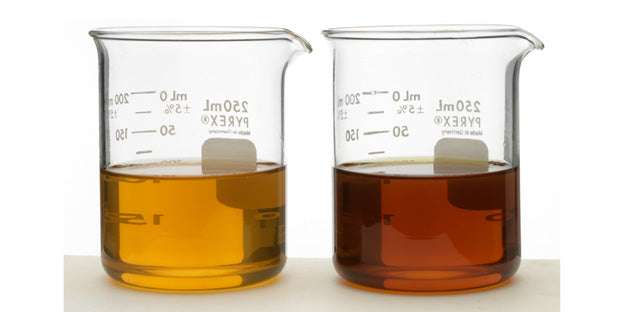
The Ultimate Guide to Understanding Motor Oil Viscosities
Motor oil is an essential component of any vehicle's engine. It lubricates the moving parts, reduces friction, and helps dissipate heat. But have you ever wondered why there are different types of motor oil with different viscosities? In this ultimate guide, we will delve into the world of motor oil viscosities and help you understand what they mean and why they matter.
What is motor oil viscosity?
Viscosity refers to the oil's resistance to flow. It determines how thick or thin the oil is at different temperatures. Motor oil viscosity is typically represented by two numbers, such as 5W-30 or 10W-40. The first number, followed by a "W" (which stands for winter), indicates the oil's viscosity at low temperatures. The second number represents the oil's viscosity at high temperatures.
Why does viscosity matter?
Viscosity plays a crucial role in ensuring proper lubrication and protection for your engine. If the oil is too thick, it may not flow freely and reach all the necessary engine components, leading to inadequate lubrication. On the other hand, if the oil is too thin, it may not provide sufficient protection and may break down under high temperatures.
Understanding the viscosity ratings
The Society of Automotive Engineers (SAE) has established a standardized system for rating motor oil viscosities. The numbers on the oil bottle represent the oil's viscosity at specific temperatures. The lower the number, the thinner the oil, and the better it flows at low temperatures. The higher the number, the thicker the oil, and the better it maintains its viscosity at high temperatures.
Single-grade vs. multi-grade oils
Single-grade oils, such as SAE 30, have a fixed viscosity rating and are suitable for specific temperature ranges. They are commonly used in older vehicles or in regions with consistent temperatures. Multi-grade oils, on the other hand, have a viscosity modifier that allows them to perform well in a wide range of temperatures. For example, a 10W-30 oil behaves like a thin 10-weight oil at low temperatures and a thicker 30-weight oil at high temperatures.
Choosing the right viscosity
Choosing the right motor oil viscosity depends on various factors, including the climate, driving conditions, and the manufacturer's recommendations. In colder climates, it's advisable to use a lower viscosity oil to ensure easy cold starts and proper lubrication. In hotter climates or for heavy-duty applications, a higher viscosity oil may be necessary to maintain proper protection under high temperatures and loads.
Consult your vehicle's manual
When in doubt, always consult your vehicle's manual for the manufacturer's recommended motor oil viscosity. They have tested and designed the engine to work optimally with a specific viscosity range. Following their recommendations will help ensure the longevity and performance of your engine.
In conclusion
Understanding motor oil viscosities is essential for maintaining your vehicle's engine health. The viscosity rating indicates how well the oil flows at different temperatures, and choosing the right viscosity is crucial for proper lubrication and protection. By following the manufacturer's recommendations and considering the climate and driving conditions, you can select the ideal motor oil viscosity for your vehicle and keep your engine running smoothly for years to come.
